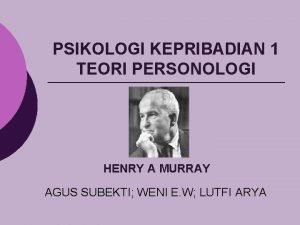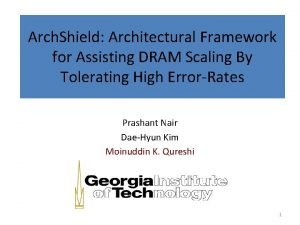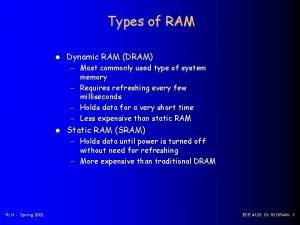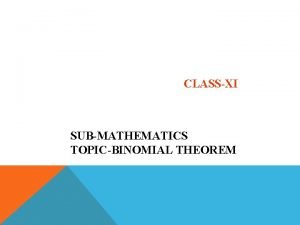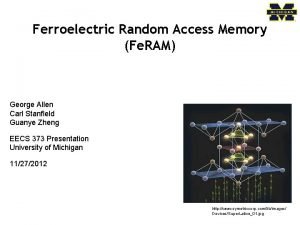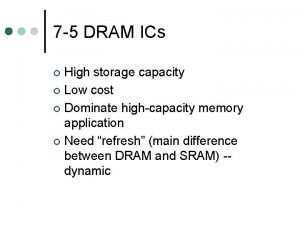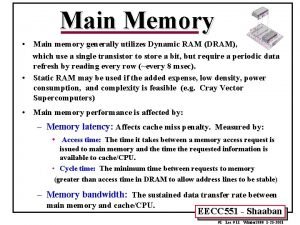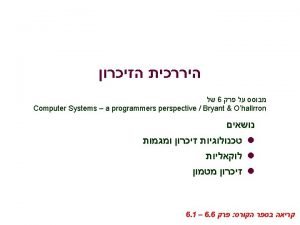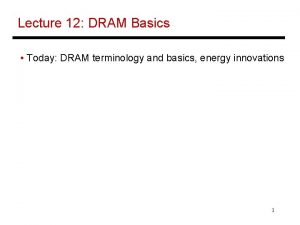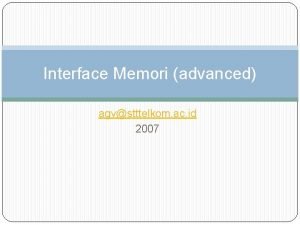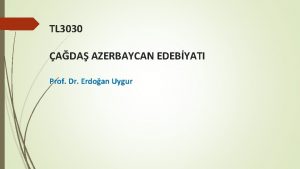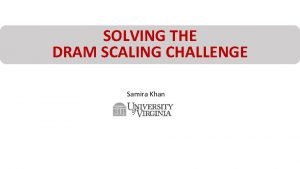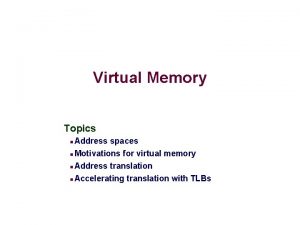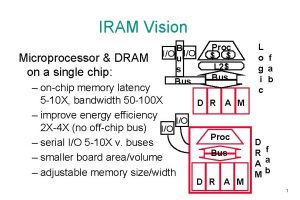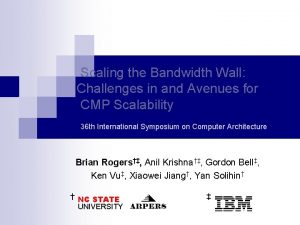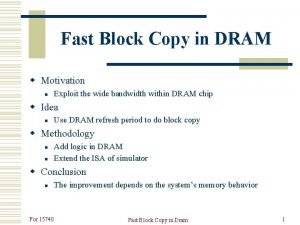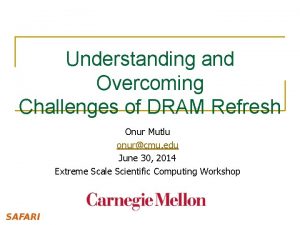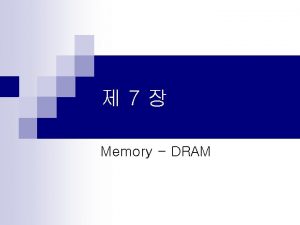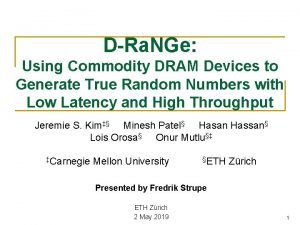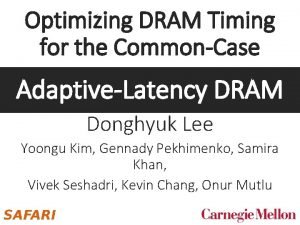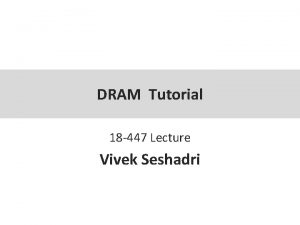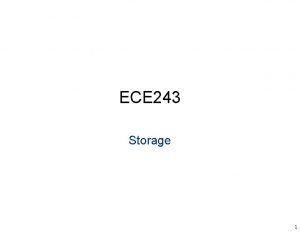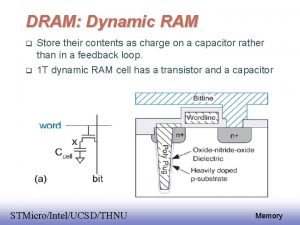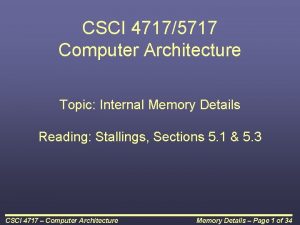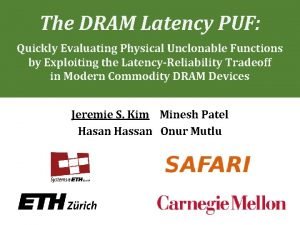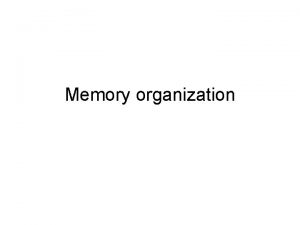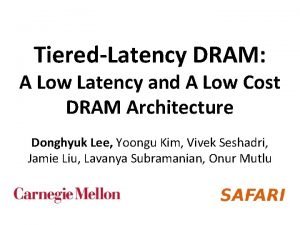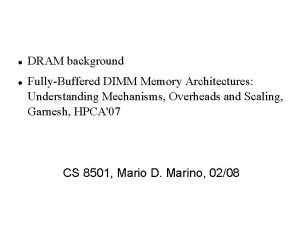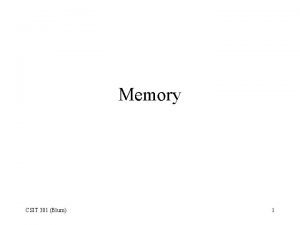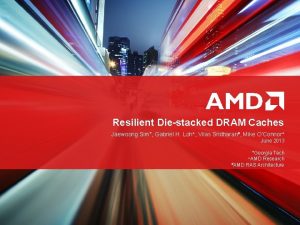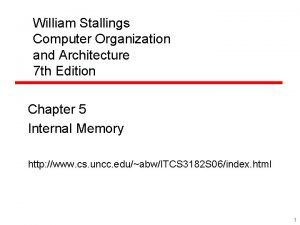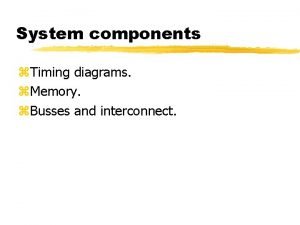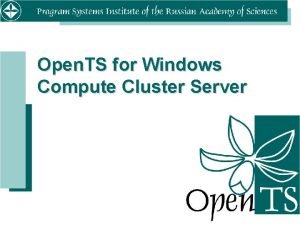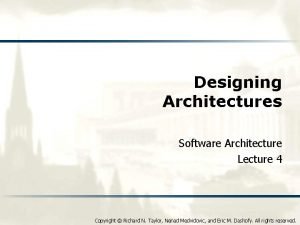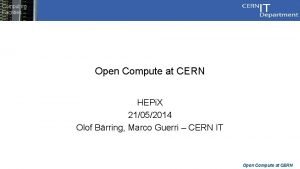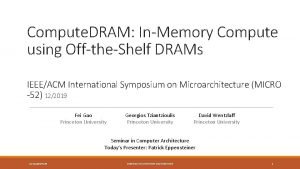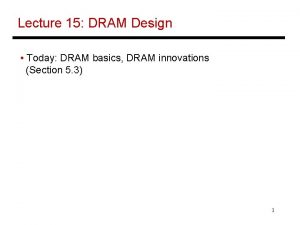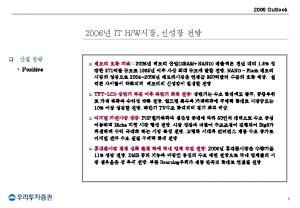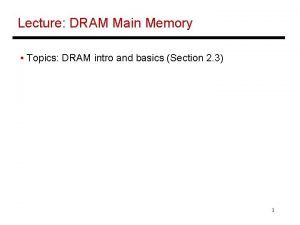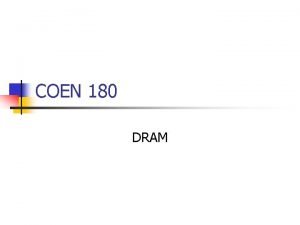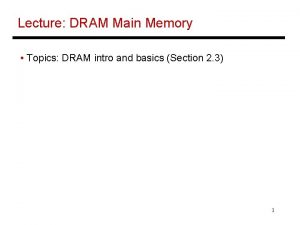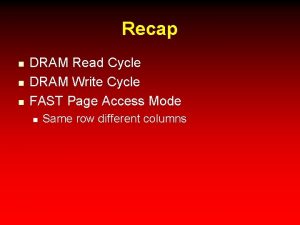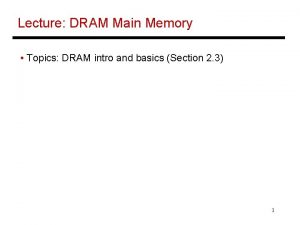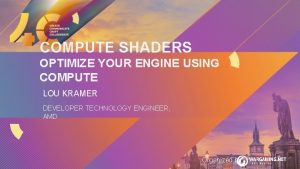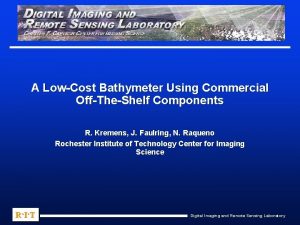Compute DRAM InMemory Compute Using OfftheShelf DRAMs Proceeding



![Motivation Google consumer workloads[1]: Data movement contributes to 62. 7% of the total energy Motivation Google consumer workloads[1]: Data movement contributes to 62. 7% of the total energy](https://slidetodoc.com/presentation_image_h2/34f66667cba650b9e308c55534506603/image-4.jpg)
![Motivation Reduce memory bandwidth demand: Reduce unnecessary data movement [1]: Illustration from Prof. Mutlu’s Motivation Reduce memory bandwidth demand: Reduce unnecessary data movement [1]: Illustration from Prof. Mutlu’s](https://slidetodoc.com/presentation_image_h2/34f66667cba650b9e308c55534506603/image-5.jpg)







































- Slides: 44

Compute. DRAM: In-Memory Compute Using Off-the-Shelf DRAMs Proceeding of the 52 nd International Symposium on Microarchitecture (MICRO), October 2019 Seminar in Computer Architecture Presented by: Christopher Meier 19 October 2020

Executive summary • Motivation: Proof that AMBIT and Row. Clone are usable. • Goal: Demonstrate row copy and bit-wise logical AND and OR in unmodified, commercial, DRAM. • Key Idea: Violate DRAM timing constraints to enable charge sharing across multiple rows in the same sub-array. • Mechanism: Perform operations with DRAM, by carefully violating its timing constraints. • Implementation: Provide an in-memory compute framework to allow arbitrary computation. • Results: Enable high computational throughput, up to 347 x more energy efficient than using a vector unit. 26. 12. 2021 2

Outline 1. 2. 3. 4. 5. 6. 7. 8. 9. 10. Motivation Solution Approaches Recap on DRAM Key Idea Mechanism of Compute. DRAM Operation Reliability Implementation of Compute. DRAM Methodology Evaluation Conclusion 26. 12. 2021 3
![Motivation Google consumer workloads1 Data movement contributes to 62 7 of the total energy Motivation Google consumer workloads[1]: Data movement contributes to 62. 7% of the total energy](https://slidetodoc.com/presentation_image_h2/34f66667cba650b9e308c55534506603/image-4.jpg)
Motivation Google consumer workloads[1]: Data movement contributes to 62. 7% of the total energy consumption. Illustration from Prof. Mutlu’s presentation on Row. Clone, pp. 23 [1]: A. Boroumand et al. 2018. Google Workloads for Consumer Devices: Mitigating Data Movement Bottlenecks. In ASPLOS ’ 18: 26. 12. 2021 4
![Motivation Reduce memory bandwidth demand Reduce unnecessary data movement 1 Illustration from Prof Mutlus Motivation Reduce memory bandwidth demand: Reduce unnecessary data movement [1]: Illustration from Prof. Mutlu’s](https://slidetodoc.com/presentation_image_h2/34f66667cba650b9e308c55534506603/image-5.jpg)
Motivation Reduce memory bandwidth demand: Reduce unnecessary data movement [1]: Illustration from Prof. Mutlu’s presentation on Row. Clone, pp 23. 26. 12. 2021 5

Solution Approach Eliminating data movement by bringing computation closer to memory. S. Ghose, A. Boroumand, J. S. Kim, J. Gómez-Luna and O. Mutlu, "Processing-in-memory: A workload-driven perspective, " in IBM Journal of Research and Development, vol. 63, no. 6, pp. 3: 1 -3: 19, 1 Nov. -Dec. 2019, doi: 10. 1147/JRD. 2019. 2934048. 26. 12. 2021 6

Recap: DRAM Hierarchy 2 1 1. Channel 2. Rank 3. Chip 4. Bank 5. Sub-Array 6. Row/Colum 7. Cell 3 4 6 5 7 26. 12. 2021 7

Recap: DRAM Hierarchy 2 1 1. Channel 2. Rank 3. Chip 4. Bank 5. Sub-Array 6. Row/Colum 7. Cell 3 4 6 5 7 26. 12. 2021 8

Recap: DRAM Commands - Activate: 1 On row level 1. Open target row 26. 12. 2021 9

Recap: DRAM Commands - Activate: 1 2 On row level 1. Open target row 2. Amplify bit-line charge 26. 12. 2021 10

Recap: DRAM Commands - Activate: 1 2 3 On row level 1. Open target row 2. Amplify bit-line charge - Precharge: On bank level 3. Close all rows 26. 12. 2021 11

Recap: DRAM Commands • 1 2 3 4 26. 12. 2021 12

Motivation • Vivek Seshadri, Yoongu Kim, Chris Fallin, Donghyuk Lee, Rachata Ausavarungnirun, Gennady Pekhimenko, Yixin Luo, Onur Mutlu, Michael A. Kozuch, Phillip B. Gibbons, and Todd C. Mowry, "Row. Clone: Fast and Energy-Efficient In-DRAM Bulk Data Copy and Initialization” Proceedings of the 46 th International Symposium on Microarchitecture (MICRO), Davis, CA, December 2013. 26. 12. 2021 13

Row. Clone: Intra-Subarray Copy VDD/2 V +DD δ src 0 dst 0 V VDD DD/2 + δ Amplify the difference Data gets copied Sense Amplifier (Row Buffer) Illustration from Prof. Mutlu’s presentation on Row. Clone, pp 31. VDD/2 0 26. 12. 2021 14

Motivation • Vivek Seshadri, Donghyuk Lee, Thomas Mullins, Hasan Hassan, Amirali Boroumand, Jeremie Kim, Michael A. Kozuch, Onur Mutlu, Phillip B. Gibbons, and Todd C. Mowry, "Ambit: In-Memory Accelerator for Bulk Bitwise Operations Using Commodity DRAM Technology” Proceedings of the 50 th International Symposium on Microarchitecture (MICRO), Boston, MA, USA, October 2017. 26. 12. 2021 15

Triple-Row Activation: Majority Function 1 0 activate all three rows ½ ½ VDD VVDD DD+ δ 1 0 1 0 enable sense amp Sense Amp Animation from: https: //www. archive. ece. cmu. edu/~safari/pubs/ambit-bulk-bitwise-dram_micro 17 -talk. pptx 16

Key Idea • 26. 12. 2021 17

Key Idea DRAM Operation Timing • Timing constraints guarantee correctness • T 1: Row Access Strobe t. RAS • T 2: Row Precharge t. RP 26. 12. 2021 18

Mechanism Performing Row Copy 1. Issue Activate R 1 26. 12. 2021 19

Mechanism Performing Row Copy 1. Issue Activate R 1 2. Bit-line gets amplified 26. 12. 2021 20

Mechanism Performing Row Copy 1. Issue Activate R 1 2. Bit-line gets amplified 3. Issue Precharge 26. 12. 2021 21

Mechanism Performing Row Copy 1. Issue Activate R 1 2. Bit-line gets amplified 3. Issue Precharge 4. - R 1 closed, driving Vdd/2 - Interrupt Precharge with Activate R 2 26. 12. 2021 22

Mechanism Performing Row Copy 1. Issue Activate R 1 2. Bit-line gets amplified 3. Issue Precharge 4. - R 1 closed, driving Vdd/2 - Interrupt Precharge with Activate R 2 5. Bit-line and cell of R 2 get amplified 26. 12. 2021 23

Mechanism Performing Row Copy 1. Issue Activate R 1 2. Bit-line gets amplified 3. Issue Precharge 4. - R 1 closed, driving Vdd/2 - Interrupt Precharge with Activate R 2 5. Bit-line and cell of R 2 get amplified 6. R 1 successfully copied to R 2 26. 12. 2021 24

Mechanism • 26. 12. 2021 25

Mechanism Performing Bulk-Bitwise logical AND/OR - Speculation: - Row address is updated from LSB to MSB - Note: - The row address update order is dependent on the manufacturer. - It will not work the same on every DRAM chip 26. 12. 2021 26

Operation Reliability Manufacturing Variations - Capacitance variations require different timings - Faulty cells due to manufacturing imperfections - Their row addresses are being remapped to another physical location 26. 12. 2021 27

Implementation As part of the proof of concept, compute. DRAM introduces an in-memory compute framework. In-memory compute framework - Software interface to perform arbitrary computation using the three basic operations as building blocks. - Manages the rows, where computations are being executed. - Addresses the issue of errors due to faulty cells, by introducing an error table. 26. 12. 2021 28

Implementation • 26. 12. 2021 29

Implementation choices - Computations only performed in the first three rows. - Operations require a setup: 1. Copy the operands and the op-constant to these 3 rows 2. Perform the computation 3. Copy the result back to the destination row 26. 12. 2021 30

Implementation Challenge - The library ensures that operand rows are in the same sub-array by checking their address. Row address Physical row layout - The addresses of remapped rows are not consistent with their physical locations. - There is no way to guarantee that data is on the same sub-array, as the new row could be anywhere. Redundant Row 26. 12. 2021 31

Implementation Solution: Error Table - Idea: Exclude ”bad” columns and rows from computation with a custom mapping. Row address Physical row layout - Requires a scanning process to discover ”bad” parts and save them to the error table. - The error table requires periodical re-scans, due to natural wear out etc. Redundant Row 26. 12. 2021 32

Methodology • Host system + FPGA running Soft. MC to control the DRAM module • Limitations: - Timing intervals are limited to multiples of 2. 5 ns - DDR 3 chips only Extensive tests on environment temperature have been made 26. 12. 2021 33

Evaluation Which manufacturers work? 26. 12. 2021 34

Evaluation Computational Throughput - Overhead does not change as we move from scalar to vector operations of 64 k elements Energy efficiency - Eliminates the high energy overhead of transferring data between CPU and main memory. - 347 x more efficient than using a vector unit for row copy. - 48 x more efficient for 8 -bit AND/OR - 9. 3 x more efficient for 8 -bit ADD 26. 12. 2021 35

Conclusion • Motivation: Proof that AMBIT and Row. Clone are usable. • Goal: Demonstrate row copy and bit-wise logical AND and OR in unmodified, commercial, DRAM. • Key Idea: Violate DRAM timing constraints to enable charge sharing across multiple rows in the same sub-array. • Mechanism: Perform operations with DRAM, by carefully violating its timing constraints. • Implementation: Provide an in-memory compute framework to allow arbitrary computation. • Results: Enable high computational throughput, up to 347 x more energy efficient than using a vector unit. 26. 12. 2021 36

Strengths • Working proof of concept - No additional hardware required - Accessible in form of a library • Addresses an important problem • Well written 26. 12. 2021 37

Weaknesses • Requirement for pairwise saving of negated values • Not applicable to every DRAM chip - Getting the timings right is substantial • Requires data to be in the same sub array • No solution for inter subarray row copy • Proof of concept - No thorough evaluation 26. 12. 2021 38

Related Work 26. 12. 2021 39

Related Work 26. 12. 2021 40

Related Work 26. 12. 2021 41

Open Discussion • Is Compute. DRAM practical for actual use? - What overhead is imposed? - Do you think the overhead is acceptable? - Are there any additional requirements to the system? • What workloads can benefit from Compute. DRAM? • Is there a way to enable more general computation? - E. g. multiplication, division, floating point arithmetic… - Where are the limits in complexity? 26. 12. 2021 42

Open Discussion • Will the solution become more important over time? • What alternatives do you see? 26. 12. 2021 43

Thank you for your attention!
 Contoh proceeding dan serial
Contoh proceeding dan serial Dram scaling
Dram scaling Appellate tribunal meaning
Appellate tribunal meaning Dynamic ram types
Dynamic ram types Compute (98)5 by binomial theorem.
Compute (98)5 by binomial theorem. Fram vs dram
Fram vs dram Dram
Dram Cache
Cache Sram vs dram
Sram vs dram Dram basics
Dram basics Dram in computer architecture
Dram in computer architecture Struktur dram
Struktur dram Azerbaycanda ilk dram eseri
Azerbaycanda ilk dram eseri Sejarah perkembangan ram
Sejarah perkembangan ram Dram scaling challenges
Dram scaling challenges Page fault
Page fault Istoreos
Istoreos Dram scaling
Dram scaling Dram block diagram
Dram block diagram Dram refresh failure
Dram refresh failure Dram ras cas
Dram ras cas Dram
Dram Dram timing
Dram timing Dram
Dram Dram cell
Dram cell Dram charge sharing
Dram charge sharing Dram memory mapping
Dram memory mapping Internal memory in computer architecture
Internal memory in computer architecture Dram puf
Dram puf Pa dram shop law
Pa dram shop law Dram tutorial
Dram tutorial Give the structure of commercial 8mx 8 bit dram chip
Give the structure of commercial 8mx 8 bit dram chip Dram
Dram Dram
Dram Types of dram
Types of dram Dram organization
Dram organization Dram sim
Dram sim Advanced dram organization
Advanced dram organization Dram timing diagram
Dram timing diagram Using system.collections.generic
Using system.collections.generic Dtfd switch
Dtfd switch Windows compute cluster server
Windows compute cluster server College grade equivalent
College grade equivalent Sense compute control architecture
Sense compute control architecture Open compute project tutorial
Open compute project tutorial
